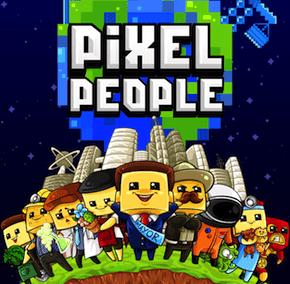Nexus One, manufactured by HTC, was hailed as the iPhone killer, which at the time was specifically the iPhone 3GS. Fast forward and it’s safe to say iPhone escaped totally unharmed, but for its time the Nexus One was an impressive piece of hardware. Just for fun, it’s worth exploring what almost seven years of hardware and software innovation can bring. It’s time for a spec showdown between the Nexus One and Pixel.
Display & Navigation
Get this: the Nexus One featured a 3.7-inch AMOLED display and that was considered pretty roomy, especially compared to the 3.5-inch on the iPhone 3GS. Possibly even worse was the resolution: 480×800 for a grand total of 254 pixels per inch. This was high resolution, people. By comparison, the Google Pixel features a 5-inch AMOLED and the Pixel XL features a 5.5-inch AMOLED. The resolutions are 1920×1080 and 2560×1440 for 441 ppi and 534 ppi, respectively. Nexus One also had two additional ways of interacting with the display. One was the capacitive menu bar underneath with Back, Menu, Home and Search — a feature on many Android devices back in the day. The other is a trackball for navigating the touch screen… without touch. This was to appeal to BlackBerry users but ultimately didn’t make much sense at all. It’s cool that it would light up for notifications though.
Speed
Nexus One was pretty fast… for a 2010 phone. It featured a single-core 1GHz Snapdragon CPU with 512MB of memory and 3G connectivity. No, not 4G and definitely not 4G LTE, alas just 3G. In fact, on AT&T in the United States, it could only connect to 2G EDGE. Both models of the Google Pixel feature a quad-core Snapdragon 821 CPU: 2.1GHz and 1.6GHz. It packs in 4GB of RAM and of course connects via 4G LTE. This makes the Pixel order of magnitude faster than the Nexus One in just under seven years. Something that’s also worth pointing out: hardware and software optimization have gotten dramatically better too. Android has gotten better over time at utilizing hardware more efficiently, so software updates increase speed as well.
Battery
Battery life really hasn’t changed much, unfortunately. Smartphones of today still get about the same usage as smartphones of yore: about a day’s worth. Of course, operating systems have gotten better at utilizing battery power just as they’ve gotten better with processing power. Plus, as phones increased in size, more room has become available for larger batteries. The Google Pixel features a 2,770 mAh battery while the Pixel XL features a 3,450 mAh one. Both can charge to seven hours in 15 minutes which impressive as well. The Nexus One sported a sad little 1,400 mAh battery.
Camera
The Nexus One camera was a 5MP shooter with autofocus and an LED flash, which was relatively new to the market back then. It could also take video in 480p VGA resolution. There was no front camera. I don’t even think the word “selfie” existed back then. As you might imagine, the camera on the Pixel is incredibly better. It’s a 12.3MP shooter with an f/2.0 aperture for great low-light photography and has a dual-LED flash. It supports 4K video capture at 30 frames per second and HD slow-motion video at up to 240 fps. The front camera is 8MP with an f/2.4 aperture and supports HD video.
Android 2.1
Perhaps most important of all is how Android has changed. Nexus One shipped with Android 2.1 Eclair and really, Android 2.0 was the first version of Android that anyone actually took seriously compared to iOS. It revamped the UI a bit especially in the browser, added multi-touch support, Bluetooth 2.1 support, Microsoft Exchange support, several new camera features and overall just elevated the Android platform to a new level. Fast forward and Pixel runs Android 7.1 Nougat — five full version numbers ahead. There are obviously far too many features to run through that Google added or tweaked over time. The UI is far better since Google has improved in its design skill and launched Material language and Android as a platform is no longer questionable. At the time of Eclair and Nexus One, people were still asking “Is this good as iPhone? Eh, maybe.” Now, there is no doubting Android’s power and capabilities. And no phone is better at showing that off than Google Pixel. The above article may contain affiliate links which help support Guiding Tech. However, it does not affect our editorial integrity. The content remains unbiased and authentic.













